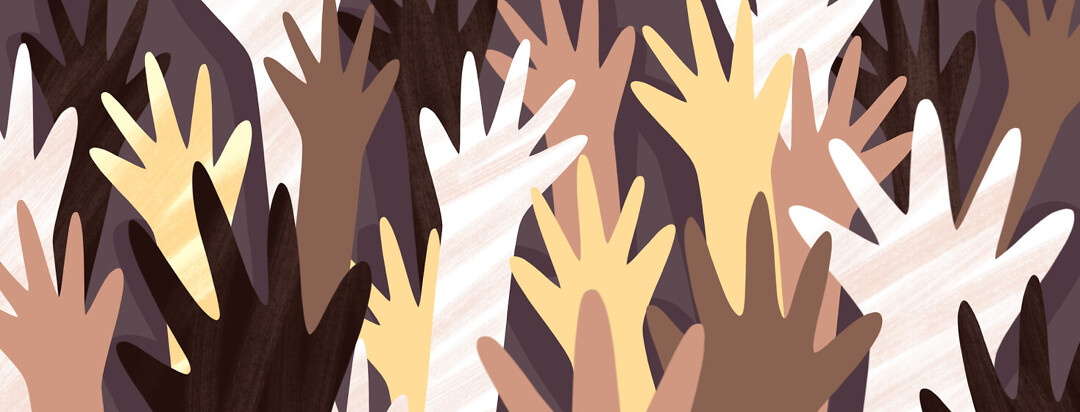Minding the Gap: Creating An Equal Space For All
The American healthcare system is burdened with inequalities and inequities that disproportionately impact people of color and other marginalized groups. These inequalities contribute to gaps in health insurance coverage, uneven access to services, and poorer health outcomes among certain populations. Blacks and African Americans bear the brunt of these healthcare challenges, especially when related to headache diseases.
Disparities in headache medicine
In the United States, one in every six Black or African Americans has been diagnosed with migraine disease, and one in every five has been diagnosed with tension-type headache.1 In my family, at least ten of us have either migraine or tension-type headache. It is extremely common, yet not everyone has been diagnosed by a physician or receives adequate treatment.
While the migraine prevalence rates for whites (15.5%), Blacks and African Americans (15%), and Hispanics and Latinx (14.9%) are similar, research has revealed a disparity in the disability, burden, diagnosis, and treatment of severe headache among the latter two groups compared to their white counterparts.2 According to a growing body of evidence, migraine is more prevalent, severe, and likely to be chronic in Blacks and African Americans than in whites.3 Blacks and African Americans are also less likely to seek medical care, receive an accurate diagnosis, or receive treatment.4
Why do disparities exist?
We're not completely sure why these discrepancies exist. These topics are frequently under-researched and poorly understood. What is clear, however, is that the challenges confronting Black, Indigenous, People of Color, or BIPOC are structurally, institutionally, socially, and economically disadvantaged. Health inequalities and inequities are also influenced by social determinants of health (SDOH), impacting people's health, well-being, and quality of life.
Underrepresentation in clinical trials
One area where historically excluded groups remain underrepresented across disease states and conditions is clinical trials. Blacks and African Americans make up 13% of the U.S. population but comprise only 9% of clinical trial participants from 2015 to 2019. Hispanics and Latinx represent 18.5% of the U.S. population but only 6% of clinical trial participants.5 Increased diversity should be prioritized in future clinical trials, and studies should investigate race-based differences in migraine disease and treatment.
This disparity makes me wonder if the lack of representation could explain why so many migraine therapies fail to work for me. It would be interesting to see changes in efficacy among people of color when clinical trials are more representative of the patient population.
About DiHAC
The current state of disparities in headache medicine has inspired some organizations, patient advocates, and healthcare providers to take action, and notable strides are being made. The Coalition for Headache and Migraine Patients (CHAMP), its coalition participants, and some of the nation's leading headache specialists are committed to effectively addressing racial and health disparities in headache diagnosis and patient care. In response to the disparities in headache medicine, they formed DiHAC (Disparities in Headache Advisory Council), a cross-functional group of patient advocacy organization leaders, BIPOC headache patients, and healthcare providers, to understand the scope of the issue and take actionable steps to make a positive difference.
Programs to increase diversity
Since DiHAC's creation last year, the group has held weekly sessions on cross-cultural competency training and learned from leaders of successful disparity reduction efforts in other disease areas. DiHAC also recently funded six programs that aim to increase diversity in the headache patient community and/or reduce disparities in headache medicine. The funded programs are:
- Strengthening Headache Knowledge of Medical Students by Larry Charleston IV, MD, MSc, FAHS
- Utilizing Opportunities to Expand Diversity and Inclusion by Clusterbusters, Inc.
- Engaging the BIPOC Community in Migraine Disease Advocacy by Miles for Migraine (MFM)
- Migraine Education for Patients & Practitioners in Underserved Communities by Association of Migraine Disorders (AMD)
- Developing Headache Medicine Providers for Native American Communities by William B. Young, MD
- Patient Professors by U.S. Pain Foundation, Inc.
Conclusion
Although there have been enormous innovations in headache medicine in recent years that give hope to people with headache disorders, we also need to eliminate racial and health disparities in diagnosis and patient care. Our new DiHAC Issue Brief helps shine a light on this topic and the path forward. As a community, we need to continue down this path and stay focused on the goal - giving all people living with headache disorders, regardless of their racial or socioeconomic status, equitable access to patient care.
Now is the time to get involved. Everyone who suffers from a headache disorder, regardless of ethnic or racial origin or financial level, deserves equal access to patient services and treatments. We believe that by raising awareness about these concerns, we may begin to reduce the gap in headache medicine disparities. If you or your organization wishes to participate in DiHAC and be part of a council that is working to end racial and health disparities in headache medicine, please reach out today by emailing DiHAC@HeadacheMigraine.org.
*This article contains excerpts from the DiHAC Issue Brief, which can be found in its complete form here.

Join the conversation